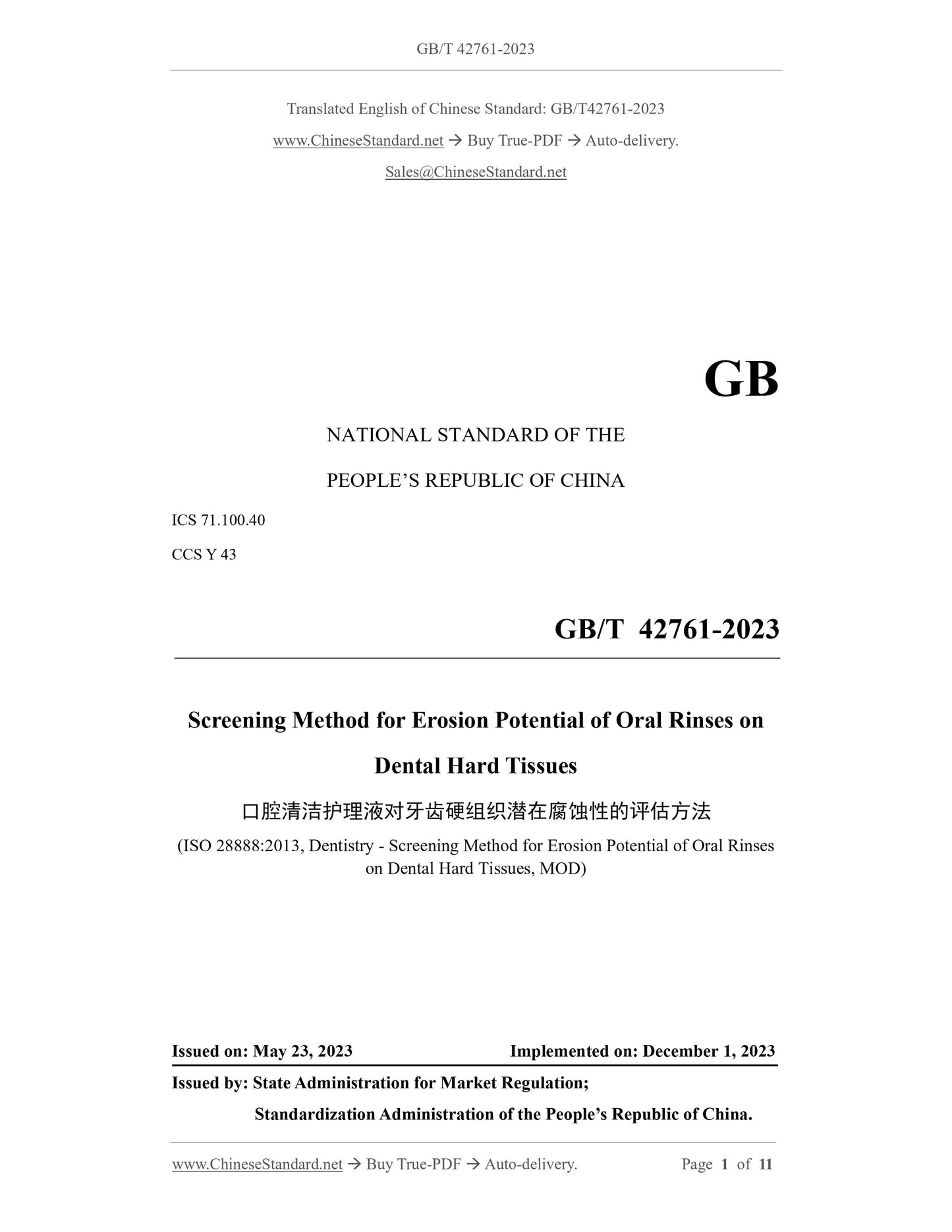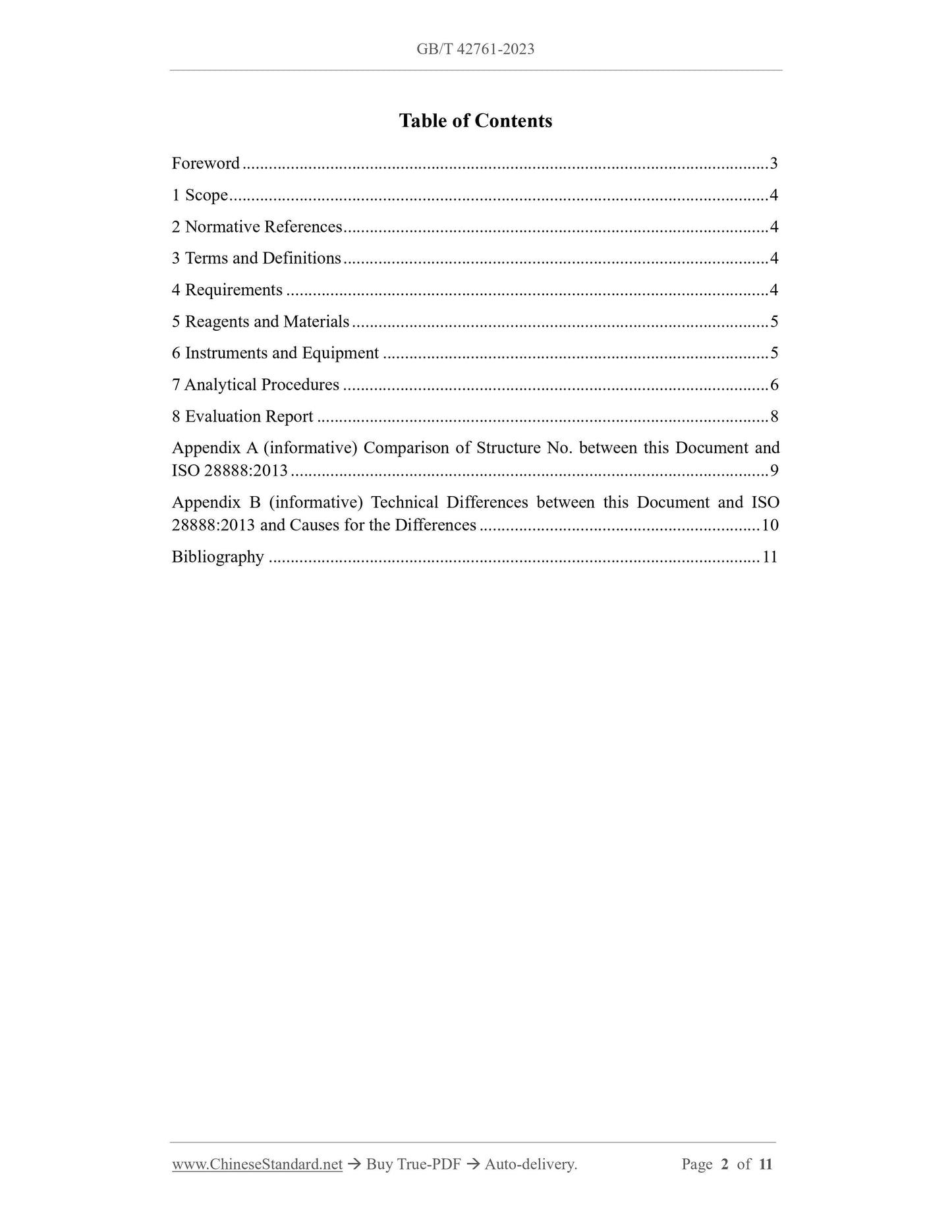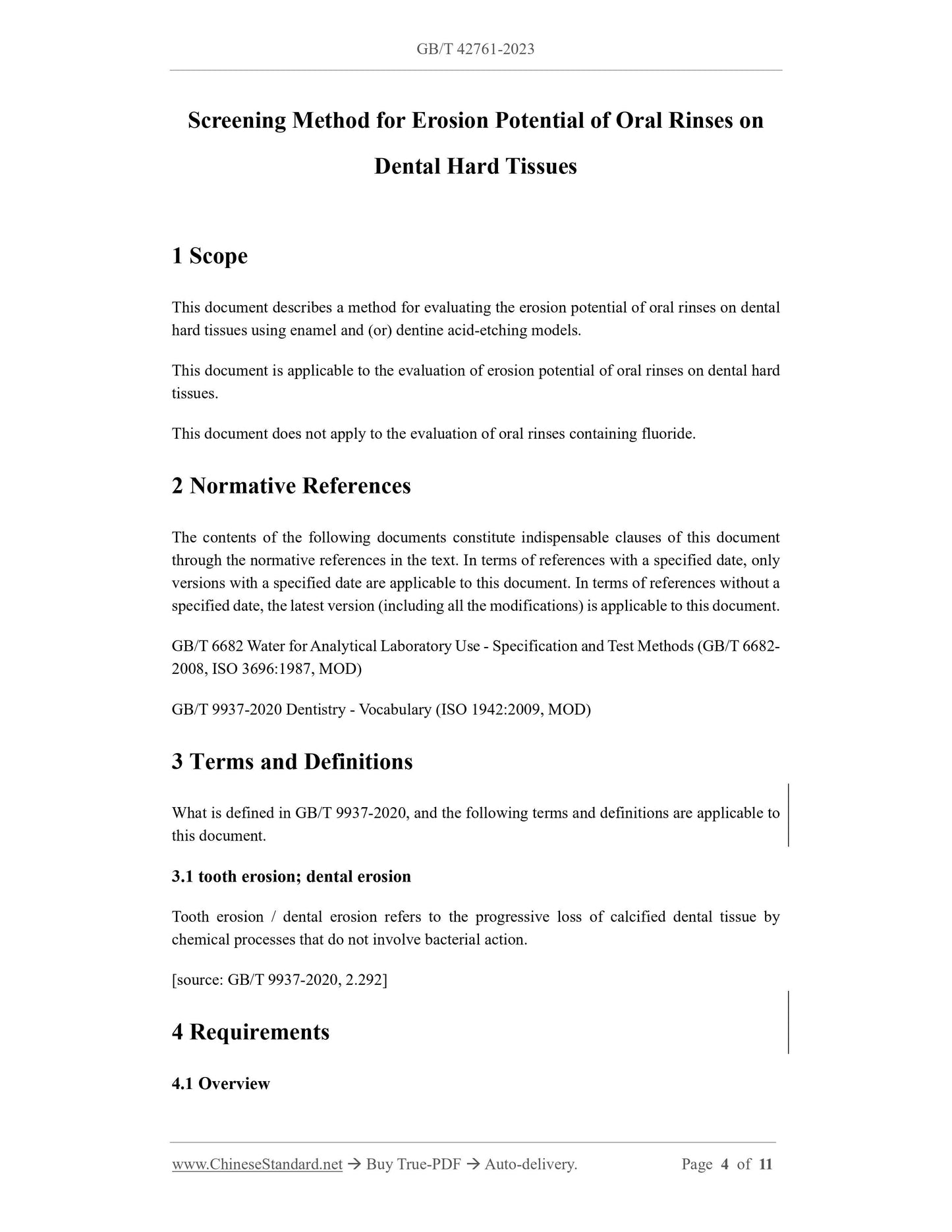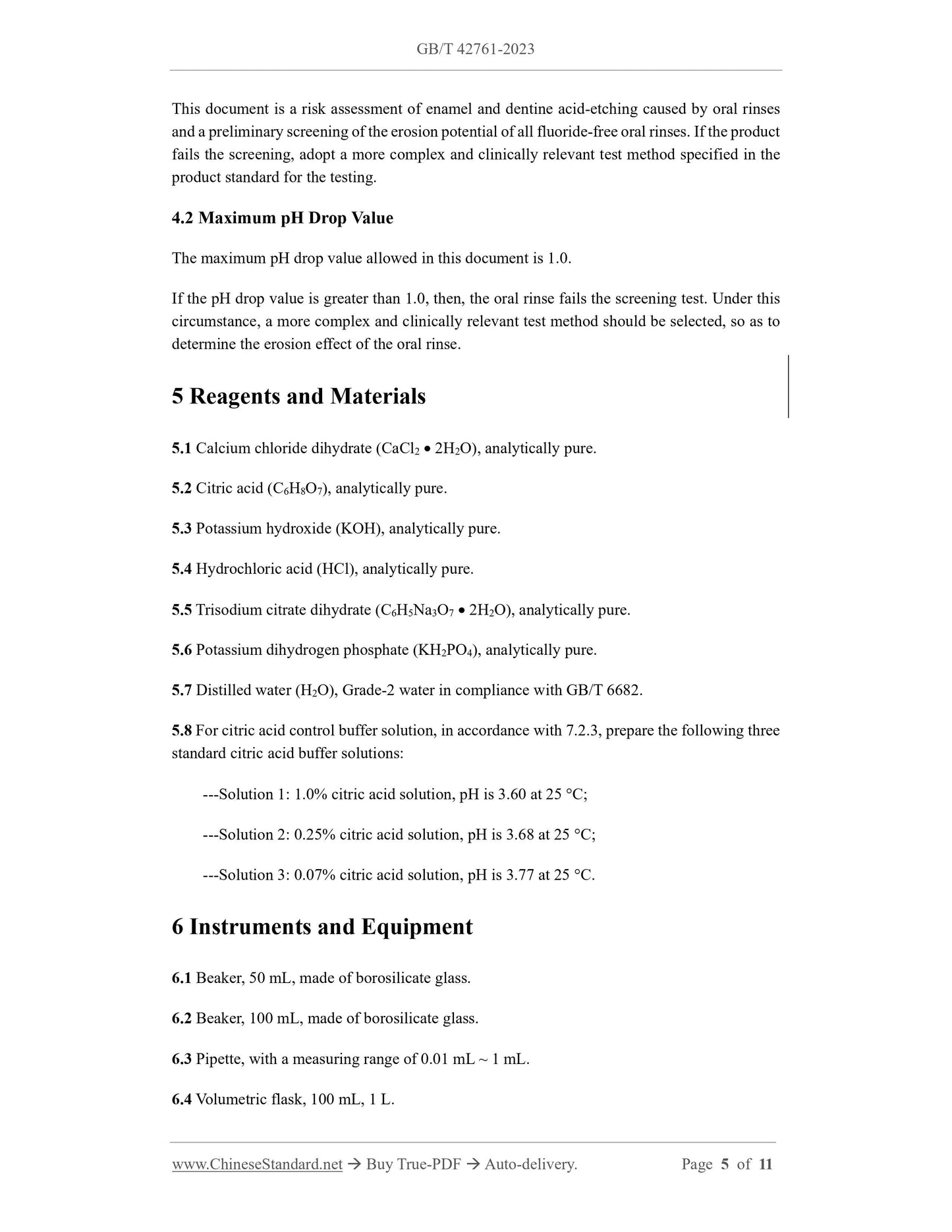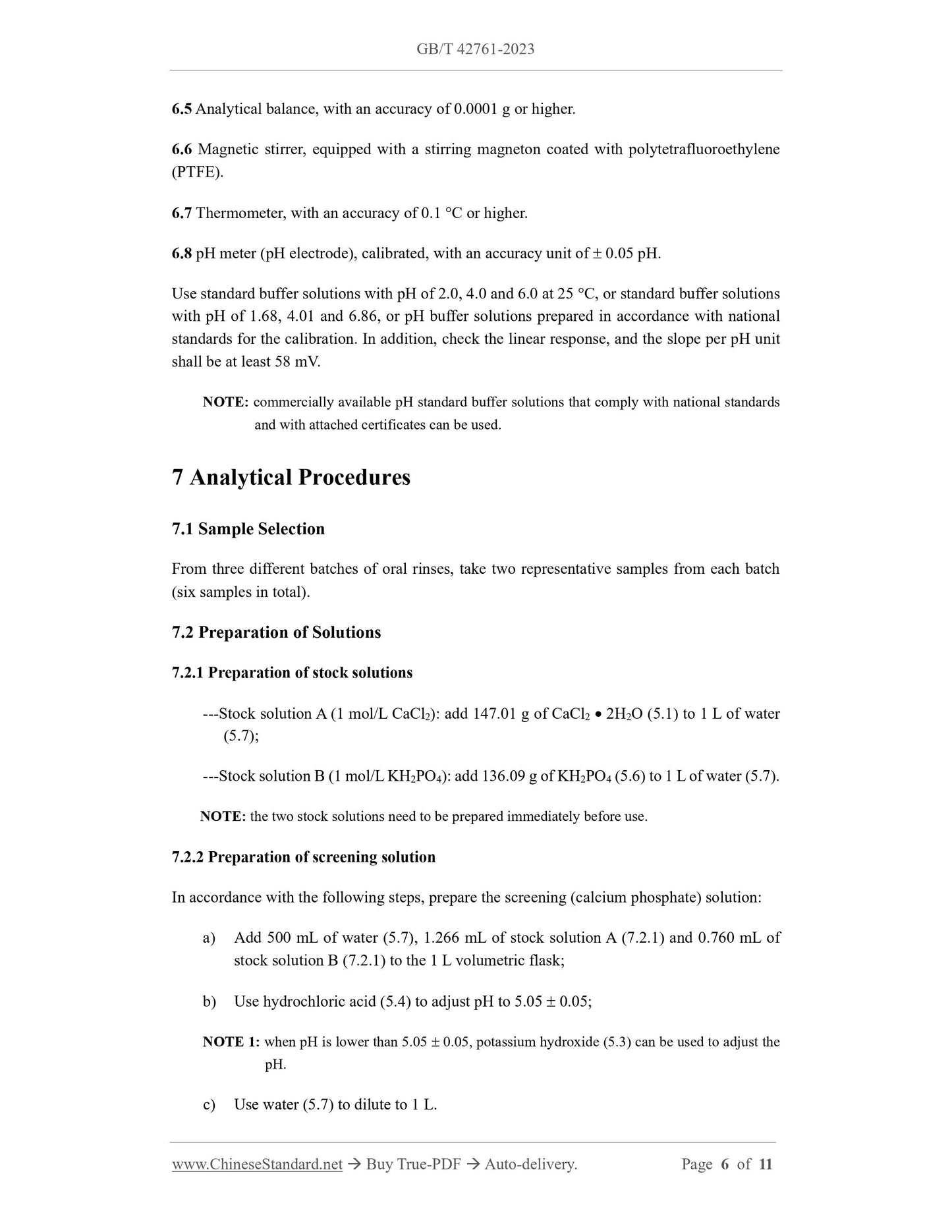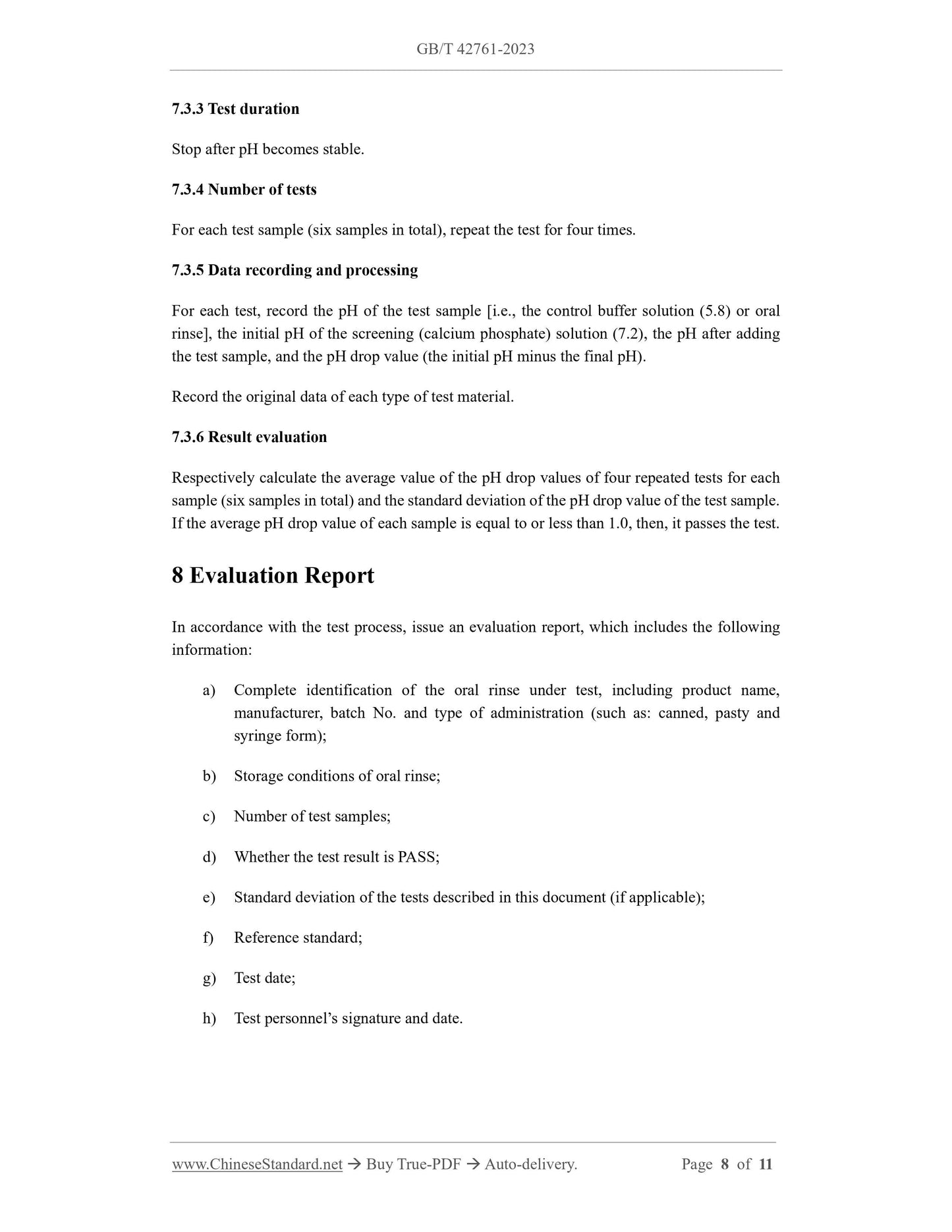1
/
of
6
www.ChineseStandard.us -- Field Test Asia Pte. Ltd.
GB/T 42761-2023 English PDF (GB/T42761-2023)
GB/T 42761-2023 English PDF (GB/T42761-2023)
Regular price
$185.00
Regular price
Sale price
$185.00
Unit price
/
per
Shipping calculated at checkout.
Couldn't load pickup availability
GB/T 42761-2023: Screening method for erosion potential of oral rinses on dental hard tissues
Delivery: 9 seconds. Download (and Email) true-PDF + Invoice.Get Quotation: Click GB/T 42761-2023 (Self-service in 1-minute)
Newer / historical versions: GB/T 42761-2023
Preview True-PDF
Scope
This document describes a method for evaluating the erosion potential of oral rinses on dentalhard tissues using enamel and (or) dentine acid-etching models.
This document is applicable to the evaluation of erosion potential of oral rinses on dental hard
tissues.
This document does not apply to the evaluation of oral rinses containing fluoride.
Basic Data
| Standard ID | GB/T 42761-2023 (GB/T42761-2023) |
| Description (Translated English) | Screening method for erosion potential of oral rinses on dental hard tissues |
| Sector / Industry | National Standard (Recommended) |
| Classification of Chinese Standard | Y43 |
| Classification of International Standard | 71.100.40 |
| Word Count Estimation | 12,167 |
| Date of Issue | 2023-05-23 |
| Date of Implementation | 2023-12-01 |
| Issuing agency(ies) | State Administration for Market Regulation, China National Standardization Administration |
Share
